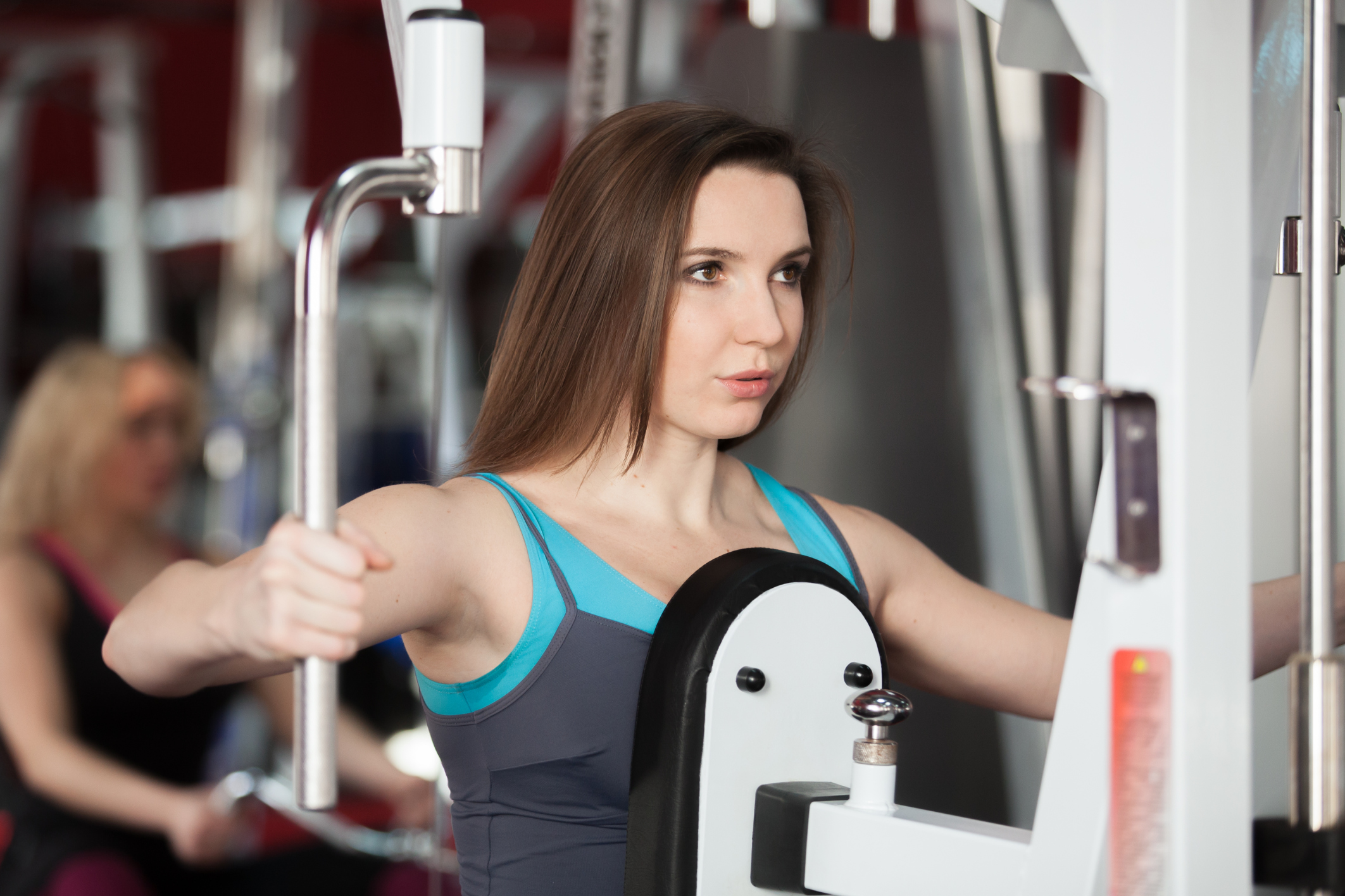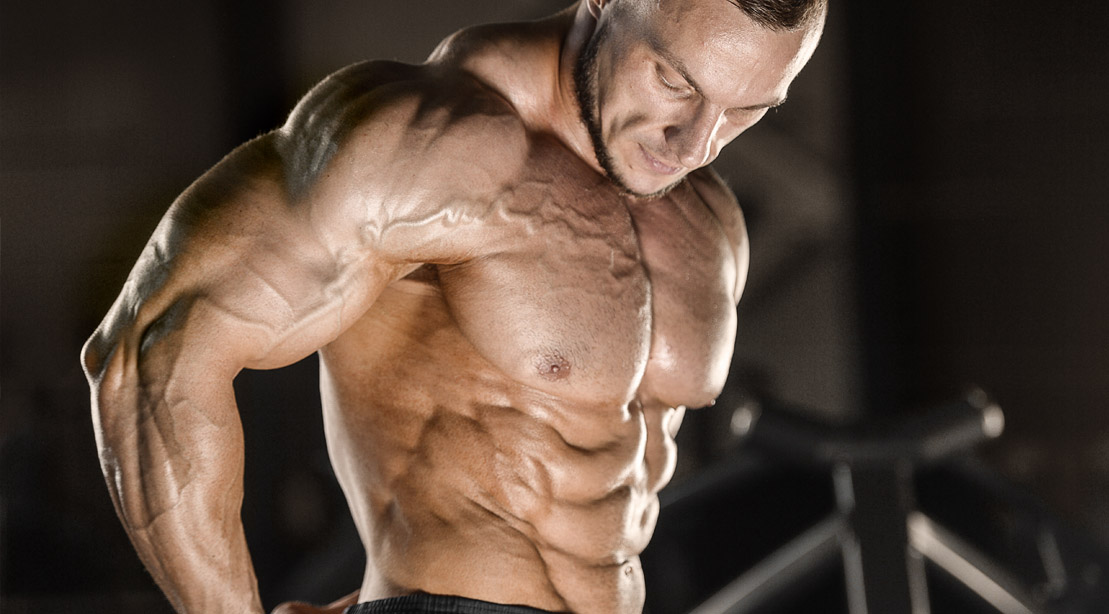Have you ever wondered how to maximize your shoulder gains after a grueling chest day at the gym? Well, you’re in the right place! We all know that chest workouts are important for building a strong upper body, but it’s equally important to give some love and attention to our shoulders.
After all, well-developed shoulders not only enhance your overall physique but also contribute to increased strength and stability. In this article, we’ll dive into the various exercises and techniques that can help you maximize your shoulder gains after a chest day.
So, you’ve just finished an intense chest workout, and now it’s time to shift your focus to your shoulders. While your chest may be feeling pumped and fatigued, it doesn’t mean you should neglect your shoulders. In fact, incorporating shoulder exercises into your post-chest workout routine can provide numerous benefits.
By targeting your shoulders, you’ll not only enhance their strength and size but also improve their overall stability, which is crucial for maintaining proper form in all your upper body exercises. In the upcoming sections, we’ll explore some effective strategies and exercises that will help you achieve those well-defined and sculpted shoulder muscles you’ve always wanted.
Stay tuned for more tips and tricks to take your shoulder gains to the next level! and Cons)

Preparation for Shoulder Workout
Before diving into your shoulder workout, it is crucial to properly prepare your body. This begins with warm-up exercises to increase blood flow and loosen up your muscles. Spend 5-10 minutes performing activities such as jumping jacks, arm circles, and shoulder rolls to get your body ready for the upcoming workout.
Following the warm-up, it is important to stretch your shoulder muscles. This will improve flexibility and help prevent injuries during the workout. Focus on stretches that target the shoulders, such as shoulder rotations and doorway stretches. Hold each stretch for 20-30 seconds and repeat on both sides.
Once your body is warmed up and stretched, it is time to choose appropriate weights for your shoulder exercises. It is essential to use weights that challenge your muscles without sacrificing proper form and technique. Start with lighter weights and gradually increase the load as your strength improves. Remember, it is better to start with lighter weights and gradually progress rather than starting too heavy and risking injury.
Exercises for Maximal Shoulder Gain
To maximize shoulder gain, it is important to incorporate a variety of exercises that target all areas of the shoulder muscles. Here are some key exercises that will help you achieve your desired results:
Overhead Press
The overhead press is a compound exercise that targets the entire shoulder complex, including the deltoids, trapezius, and triceps. Stand with your feet shoulder-width apart and hold the weights at shoulder level with palms facing forward. Press the weights directly overhead, fully extending your arms, and then lower them back down to shoulder level.
Side Lateral Raise
The side lateral raise primarily targets the lateral head of the deltoids, which is responsible for the width and roundness of your shoulders. Stand with your feet shoulder-width apart and hold the weights by your sides with palms facing inward. Raise your arms to the sides until they are parallel to the floor, and then lower them back down.
Rear Delt Fly
The rear delt fly targets the rear delts, which are often neglected but essential for overall shoulder development. Bend forward at the waist with a slight bend in your knees, and let the weights hang down in front of you with palms facing each other. Raise your arms to the sides, keeping a slight bend in your elbows, and squeeze your shoulder blades together at the top of the movement. Lower the weights back down to the starting position.
Front Raise
The front raise primarily targets the front delts, which are responsible for the front portion of your shoulder shape. Stand with your feet shoulder-width apart and hold the weights in front of your thighs with palms facing down. Raise your arms straight out in front of you until they are parallel to the floor, and then lower them back down.
Upright Row
The upright row targets the traps, side delts, and upper back muscles. Stand with your feet shoulder-width apart and hold the weights in front of your thighs with palms facing your body. Lift the weights straight up towards your chin, keeping them close to your body, and then lower them back down.
Arnold Press
The Arnold press is a variation of the overhead press that adds an additional rotation movement, further engaging the shoulder muscles. Start with the weights held at shoulder level with palms facing your body. As you press the weights overhead, rotate your palms away from your body, so they are facing forward at the top of the movement. Bring the weights back down to shoulder level while rotating your palms back towards your body.

Correct Form and Technique
While performing shoulder exercises, it is crucial to maintain proper form and technique to ensure maximum effectiveness and minimize the risk of injury. Here are some key points to remember:
Maintaining Proper Posture
Stand tall with your shoulders back and down, chest lifted, and core engaged. Avoid slouching or hunching over, as this can put unnecessary strain on your shoulders and compromise your form.
Engaging the Shoulder Muscles
Focus on initiating the movement from your shoulders rather than relying on other muscles to assist. This will ensure that the target muscles are being properly trained and developed.
Avoiding Excessive Momentum
Avoid swinging or using excessive momentum to lift the weights. The goal is to use controlled movements and focus on the muscle contraction. If you find yourself relying on momentum rather than muscle strength, consider decreasing the weight or adjusting your form.
Keeping Core Stabilized
Engaging your core throughout the exercises will help stabilize your body and prevent unnecessary strain on your lower back. Keep your abdominals tight and maintain a neutral spine position.
Optimal Sets and Repetitions
Determining the right number of sets and repetitions is essential for maximizing shoulder gains. Here are some guidelines to consider:
Choosing the Right Number of Sets
For beginners, starting with 2-3 sets per exercise is a good starting point. As your strength and endurance improve, you can gradually increase the number of sets to 3-4 or even 5.
Determining the Ideal Rep Range
To build muscle mass and strength, aim for a rep range of 8-12 repetitions. This range helps stimulate muscle growth and promotes muscle hypertrophy. However, it is important to periodically vary your rep ranges to challenge your muscles and prevent plateauing.
Progressive Overload
Progressive overload is the gradual increase in weight or intensity to continually challenge your muscles. Aim to progressively increase the weight or add more repetitions as you become stronger. This will ensure continued progress and growth in your shoulder muscles.

Training Frequency and Rest Days
While it may be tempting to train your shoulders every day to maximize gains, it is important to allow sufficient recovery time. Overtraining the shoulders can lead to overuse injuries and hinder your progress. Here are some guidelines to consider:
Allowing Sufficient Recovery Time
Give your shoulders at least 48 hours of rest between workouts to allow for proper recovery. This will give your muscles time to repair and grow, leading to maximum gains. If you are performing other upper body exercises on your rest days, make sure they do not excessively tax your shoulder muscles.
Avoiding Overtraining the Shoulders
Listen to your body and pay attention to any signs of overtraining, such as persistent soreness, decreased strength, or lack of progress. If you notice any of these signs, take additional rest days or reduce the intensity of your workouts.
Incorporating Rest Days into the Workout Schedule
Plan your workout schedule to include regular rest days. This will give your body time to recover and rejuvenate, leading to better overall performance and results.
Incorporating Compound and Isolation Exercises
To maximize shoulder gains, it is important to strike a balance between compound and isolation exercises.
Benefits of Compound Exercises
Compound exercises, such as the overhead press and upright row, involve multiple muscle groups and joints. These exercises not only target the shoulders but also engage other muscles, leading to overall strength and stability gains.
Importance of Isolation Exercises
Isolation exercises, like the side lateral raise and front raise, specifically target individual muscles. These exercises help to shape and define the shoulders, bringing out their full potential.
Finding the Right Balance
Incorporate a mix of compound and isolation exercises in your shoulder workout routine. This will ensure that all areas of the shoulders are being targeted effectively, leading to balanced muscle development.

Proper Nutrition for Shoulder Growth
To maximize shoulder gains, it is important to fuel your body with the right nutrition. Here are some key points to consider:
Adequate Protein Intake
Protein is essential for muscle growth and repair. Aim to consume 0.8-1 gram of protein per pound of body weight to support optimal muscle development. Good sources of protein include lean meats, poultry, fish, eggs, dairy products, and plant-based protein sources such as legumes and tofu.
Balanced Diet with Essential Nutrients
In addition to protein, ensure that your diet includes a balance of carbohydrates, healthy fats, and micronutrients. Carbohydrates provide energy for your workouts, while healthy fats support hormone production and overall health. Incorporate a variety of fruits, vegetables, whole grains, and healthy fats into your daily meals.
Hydration
Proper hydration is crucial for muscle function and overall health. Aim to drink at least 8 cups (64 ounces) of water per day, and more if you are engaging in intense physical activity. Staying hydrated will help optimize your workout performance and aid in muscle recovery.
Avoiding Shoulder Injury
Injury prevention is key to maintaining a successful and sustainable shoulder workout routine. Here are some tips to help avoid shoulder injuries:
Listening to Your Body
Pay attention to any discomfort or pain during your workouts. If you experience sharp or persistent pain, stop the exercise and seek medical advice. Pushing through pain can lead to further injury and hinder your progress.
Using Proper Form
Always prioritize proper form and technique over lifting heavy weights. Using correct form helps to target the intended muscles and reduces the risk of injury.
Avoiding Heavy Weights after Chest Day
If you perform chest exercises prior to your shoulder workout, avoid using heavy weights for shoulder exercises. The chest muscles are already fatigued, and using heavy weights can put unnecessary strain on the shoulder joints.

Post-Workout Recovery
Proper post-workout recovery is essential for muscle repair and growth. Here are some key steps to include in your post-workout routine:
Cool-Down Exercises
After your workout, perform light cardio exercises such as walking or cycling for 5-10 minutes. This helps to gradually lower your heart rate and promotes blood circulation, aiding in muscle recovery.
Stretching Routine
Include a stretching routine after your workout to improve flexibility and prevent muscle tightness. Focus on stretches that target the shoulder muscles, holding each stretch for 20-30 seconds.
Proper Post-Workout Nutrition
Within 30 minutes of completing your workout, consume a balanced meal or protein shake to replenish your muscles with essential nutrients. This helps support muscle repair and growth.
Conclusion
Maximizing shoulder gains after chest day requires a dedicated approach to training, proper form and technique, and adequate recovery. By following the outlined guidelines, you can enhance your shoulder development and avoid potential injuries. Remember to listen to your body, adjust your routine as needed, and make proper nutrition and recovery a priority.
With consistent effort and a smart training plan, you can achieve the strong, sculpted shoulders you desire. Keep pushing yourself, and enjoy the journey to maximizing your shoulder gains!




